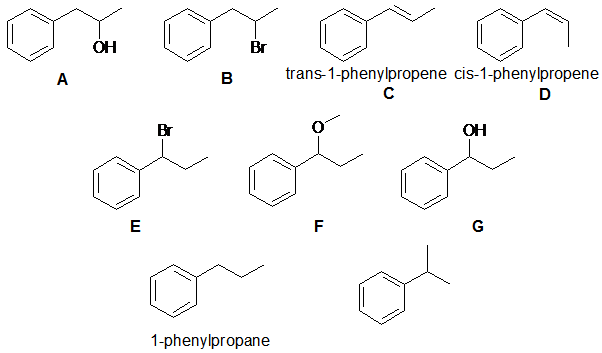
Part 9 : STRUCTURE DETERMINATION
Note that these types of questions are often the most difficult on the examination. This is because they are holistic in that they require a good understanding of the reactions and the concepts and the ability to apply those concepts. They can't be memorised, they require understanding and ability to apply. Hence they help discriminate those who truly understand from those who have memorised and will soon forget.
A C9H12O IHD = 4, IR data suggests an alcohol. 13C nmr 7 types of carbon.
Key information is for E which is formed by the radical bromination at the benzlic position of 1-phenylpropane. Once we have E nucleophilic substitution (SN1) with AgNO3 and methanol gives the methyl ether F. Another nucleophilic substitution (SN2) with H2O / Na2CO3 gives alcohol G. C and D are alkenes that add H2 to get to 1-phenylpropane, C being the Zaitsev and trans product and D the Zaitsev and cis product . These can be formed from B which is formed via nucleophilic substitution (SN2) from alcohol A.
